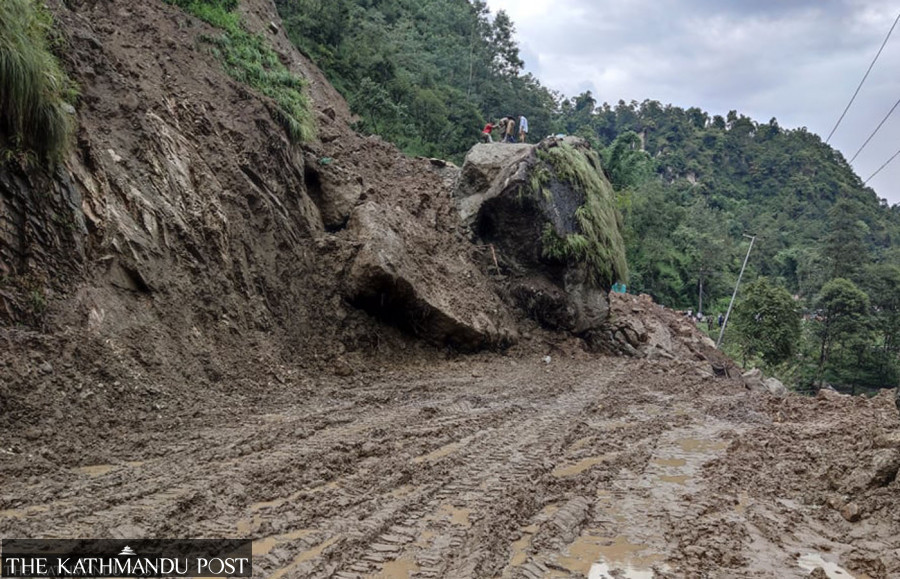Editorial
Killer monsoon roads
Government must heed the experts, engineers and geologists when constructing or widening roads.
Nepal is not even halfway through this monsoon, and the rain has already brought deadly floods and landslides. As per official records, from June 10 to July 14, a total of 108 people have died, many more have been injured, and 3,552 families have been displaced across the country. The death toll is likely to mount as more bodies surface from the recent tragic Simaltal incident on the Mugling-Narayanghat road section (also called Madan Ashrit Highway), where a landslide swept two buses carrying 65 people into Trishuli River last week.
It is unfortunate that our efforts to prevent human loss have been far from satisfactory. Constant politicking, lack of preparedness and a culture of dismissing expert research and suggestions on road construction all make monsoons a perfect storm of disasters. Take the Mugling-Narayanghat road. The road was widened without factoring in its geographical vulnerability and landslide risks, and the landslides there have only gotten worse in the past few years. Moreover, haphazard roads built above the major roads throughout the country have put many lives in danger, as happened during the Simaltal incident. As per a Setopati report, the debris flow brought about by the road construction in the settlements above the Simaltal area reportedly resulted in the incident.
Geologists have consistently raised concerns about the risks associated with the highway; however, their words have fallen on deaf ears. In June of this year, the landslide risk assessment flagged 11 areas on the highway as zones that needed immediate study and 25 areas as prone to landslides. Similarly, according to Kaski district’s Disaster Response Plan (as reported by Himalkhabar), 25 settlements are in danger of flood and landslide in Pokhara Metropolitan City. As a part of their disaster preparedness, each district is mandated to prepare a disaster response plan. Despite this, when the time comes to act, they lack the necessary human resources, equipment, or budgetary support to prevent disasters and rescue people. We don’t have to look far to see how the country’s disaster preparedness has failed—Simaltal has received major attention in terms of rescue yet, as of now, neither the buses that were swept away nor most of those missing have been found.
When it comes to dealing with disasters, our authorities have always adopted a wait-and-see approach. The Home Ministry, responsible for overseeing national disaster preparedness, issued a notice on preventive measures, including suspending the plying of vehicles at night in high-risk areas, only after the tragic incident on the Mugling-Narayanghat highway. These measures could still prove beneficial, but we need a long-term solution and pre-planning. As local governments are still ill-prepared to handle pre-disaster preparedness as well as post-disaster rescue efforts, it is up to the federal government to equip the community level bodies with enough budget and equipment.
We have had enough of these life-threatening disasters. Even though it is already late, all three levels of government must heed the experts, engineers and geologists when constructing or widening roads. The much-needed slope stabilisation through bio-engineering should be done on the Mugling-Narayanghat highway and other risky paths without further delay. The governments should also prioritise rigorous monitoring and follow-ups on road construction. We cannot afford to lose any more lives to these disasters.



 10.12°C Kathmandu
10.12°C Kathmandu














